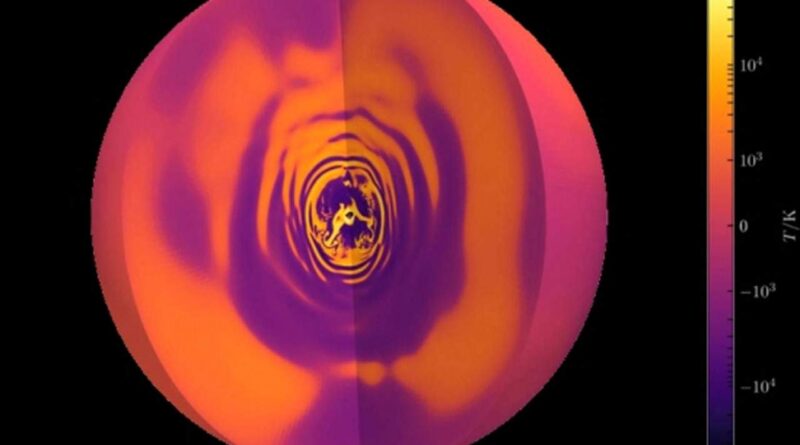Research highlights the hidden process at work far in the star
Astronomers know that big stars usually end their lives in a supernovae explosion. The explosion falsified the element we knew in the periodic table. Astronomers say how the elemental nucleus mixture in these big stars has a significant impact on an understanding of the evolution of the stars before exploding. Knowing how the nucleus mixture of elements in large stars is one of the most significant mysteries for scientists who study their structure and evolution.
A research team led by May Gade Peterson has been able to measure internal mixing in a large collection of stars using wave observations from within their interior. Scientists have used this technique before, but this research was the first time had been achieved for a large group of stars at once. The researchers knew that stars spent most of their lives hitched hydrogen into helium deep in their core.
Fusion in some large stars, is very concentrated in the middle and leads to a turbulent convective core which is equated with boiling water pan. Convection and other processes, including rotation, removing helium ash from the core, replacing it with hydrogen from a star envelope that allows the stars to live longer than predictable.
Astronomers believe that mixing comes from various physical phenomena, including internal rotation and plasma plasma internal seismic waves in the convection core. This theory is described as mostly not limited by observations because it happens so far in the star. The researchers used Stellar oscillation studies to directly investigate the star interior and make comparisons with predictions of the star model.
Researchers can get internal mixing for Bintang Ansambel using asteroseismology. Scientists said this was the first time this had been achieved and made possible thanks to new samples from 26 star-B stars which knelt with identified star oscillations. The stars were all found by NASA Kepler Mission. Future observations will be made with data collected from NASA’s tess mission.




